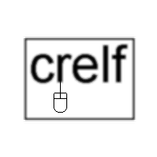-
Posts
633 -
Joined
-
Last visited
-
Days Won
4
Gary Rubin last won the day on May 5 2010
Gary Rubin had the most liked content!
Profile Information
-
Gender
Male
-
Location
Northern Virginia, USA
-
Interests
LabVIEW, Matlab
Data Analysis
Data Acquisition
Contact Methods
- Personal Website
LabVIEW Information
-
Version
LabVIEW 8.6
-
Since
1997
Recent Profile Visitors
5,719 profile views
Gary Rubin's Achievements
Newbie (1/14)
32
Reputation
-
I don't know how applicable it is to FPGA, but using FIR filter was discussed here
-

Suggestions for improving 2D array access speed?
Gary Rubin replied to Kerry's topic in LabVIEW General
Aside from the other things previously mentioned, have you tried reading a 6-element row from the big array, then reading the individual elements of that 6-element vector? It's been a while since I've played with this stuff, and I don't currently have LabVIEW installed on this machine, but I found that optimization was greatly aided by turning on the memory allocation dots. You may find that your approach is making lots of copies of the big array. -
Very nice! My kids' elementary school has the district's only school-based MakerSpace program. I volunteer teaching 3rd-6th graders to use Lego Mindstorms NXT. With that giving them the background into graphical programming, this would be a great next step.
-
I really think you want to use a matched filter. It's basically the cross-correlation that infinitenothing mentioned, and is very standard in radar signal processing to find the time of arrival of an echo even in the presence of noise and clutter. You just need to have a copy of the signal that you originally sent out. It can be implemented as a sliding point-by-point multiply in the time domain or in the frequency domain as a vector multiply (with some FFTs involved). Some googling on Matched Filter should get you there pretty quickly. Gary
-
Look into "matched filter"
-

Actor Framework - Too much coupling?
Gary Rubin replied to GeorgeG's topic in Object-Oriented Programming
If you think there's too much coupling between the actors, try switching to G-rated movies... <sorry, couldn't resist> -

Need help: want to build a real-time GPS tracker for multiple movers
Gary Rubin replied to Aristos Queue's topic in Hardware
I agree with those proposing some form of RFID. If you control the environment and can set up your readers wherever you want, I think that's the way to go. -
Okay, I was missing something. For some reason, I thought the idea proposed was 2 buffers so that one wraps around when the other doesn't. I see that's not what SDietrich was suggesting, but I still don't see how his extra-long buffer keeps a wrap-around from happening. I guess I'm still missing something.
-
I must be missing something - doesn't that only help you half the time? What happens when i=2*usersize and both of your buffers have to roll over at the same time? If you knew your max resize, you could probably size them so that both the smaller and larger buffer aren't integer multiples in length and are unlikely to wrap-around within the same read block size.
-
If I stare at that picture with my eyes slightly crossed, should I expect to see a horse or something?
-
I was hoping for that too. When I looked at this about 5 years ago, it was just memory access (peaks and pokes) to the CUDA-compatible GPU card.
-
At this point (and this may change), I'm looking at LINX as just a set of driver functions, much like a dll. I don't really care what's going on in the middle - all I know is that I make a function call and get the proper response. If I get to the point that I'm writing code to run on the Arduino and using LINX to talk to that code, my opinion may change. Right now, I'm more than happy thinking of it as a black box. EDIT: I've used plenty of non-NI acquisition hardware for which I've written LabVIEW wrappers around the vendor's dll functions. I see the Arduino/LINX combination the same as those hardware/dll combinations. That may be why you and I see this differently - I'm used to having black box functions sitting between me and the hardware, so I didn't even look into the LINX VIs.
-
From a user standpoint, it doesn't. If user experience isn't affected, do you care if MS Word source code is well documented? Or even well-written? Unless you need to modify or support code, I don't see why in-code documentation matters.
-
So far LINX works and at this point, that's really all I care about from my middleware. If I start trying to make it do things that outside its current scope, then I might care about the LINX VI architecture and design. But isn't the whole reason for downloading such a library is so that I don't have to worry about such things?.
-
Yes, I know. One board that I was looking at says "Coming Soon", although it's been discontinued and replaced by a next generation. That's why I was hoping for some first-hand experience that might indicate whether their hardware/software is better than their web presence.









